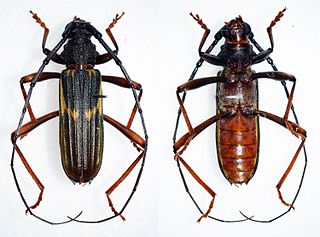
Bothriospilini is a tribe of beetles in the subfamily Cerambycinae. The tribe was proposed in 1950 by Brazilian entomologist Frederico Lane as a member of the new subfamily Bothriospilinae, and with Bothriospila assigned as the type genus. The tribe is morphologically close to the tribe Torneutini, with which it has in common the same shape of the last abdominal segment, which is wide and largely braided in the female, as well as the anterior thigh cavities that are open from behind and the laterally open medial cavity.
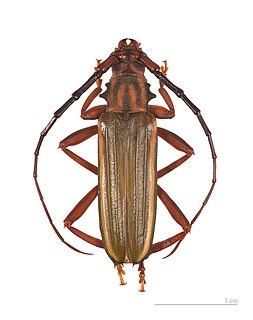
Chlorida is a genus of beetles in the family Cerambycidae, containing the following species:
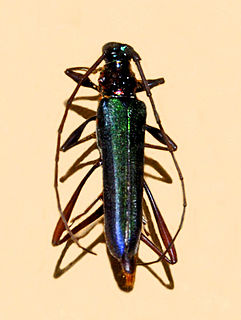
Callichromatini is a tribe of beetles in the subfamily Cerambycinae, which include the following genera:
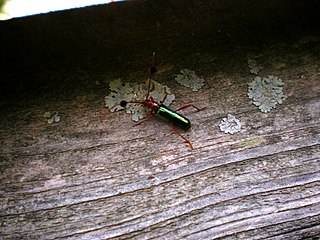
Compsocerus is a genus of beetles in the family Cerambycidae, containing the following species:
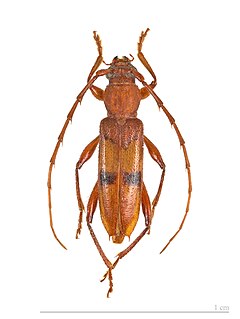
Elaphidiini is a tribe of beetles in the subfamily Cerambycinae, historically also often spelled "Elaphidionini".

Graciliini is a tribe of beetles in the subfamily Cerambycinae, containing the following genera:
Tropidion is a genus of beetles in the family Cerambycidae, containing the following species:
Piezocera is a genus of beetles in the family Cerambycidae, containing the following species:

Trachyderini is a tribe of long-horned beetles in the family Cerambycidae. There are at least 140 genera and 650 described species in Trachyderini.
Crioprosopus is a genus of long-horned beetles in the family Cerambycidae. There are about 13 described species in Crioprosopus.
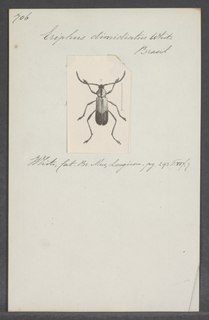
Eriphus is a genus of beetles in the family Cerambycidae, containing the following species:
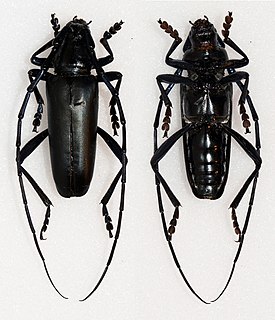
Stenaspis is a genus of beetles in the family Cerambycidae, containing the following species:
Trachelissa is a genus of beetles in the family Cerambycidae, containing the following species:
Stenaspis verticalis is a species of beetle in the family Cerambycidae. It was described by Audinet-Serville in 1834.
Trachelissa pustulata is a species of beetle in the family Cerambycidae. It was described by Audinet-Serville in 1834.

Chlorida festiva is a species of beetle in the family Cerambycidae. It was described by Carl Linnaeus in his landmark 1758 10th edition of Systema Naturae. It is known from southeastern United States, Central America, South America, and the West Indies. Adult males produce (6E,8Z)-6,8-pentadecadienal, an attractant pheromone. In Puerto Rico the larvae are known to be leaf mining pests of mango crops.
Chlorida spinosa is a species of beetle in the family Cerambycidae. It was described by Per Olof Christopher Aurivillius in 1887. It is known from Colombia, Bolivia and Peru. Adult males produce (6E,8Z)-6,8-pentadecadienal, an attractant pheromone.
Chrysoprasis festiva is a species of beetle in the family Cerambycidae. It was described by Audinet-Serville in 1834.
Tropidion bituberculatum is a species of beetle in the family Cerambycidae. It was described by Audinet-Serville in 1834.
Euporus is a genus of beetles belonging to the large subfamily Cerambycinae in the family of longhorn beetles (Cerambycidae).







